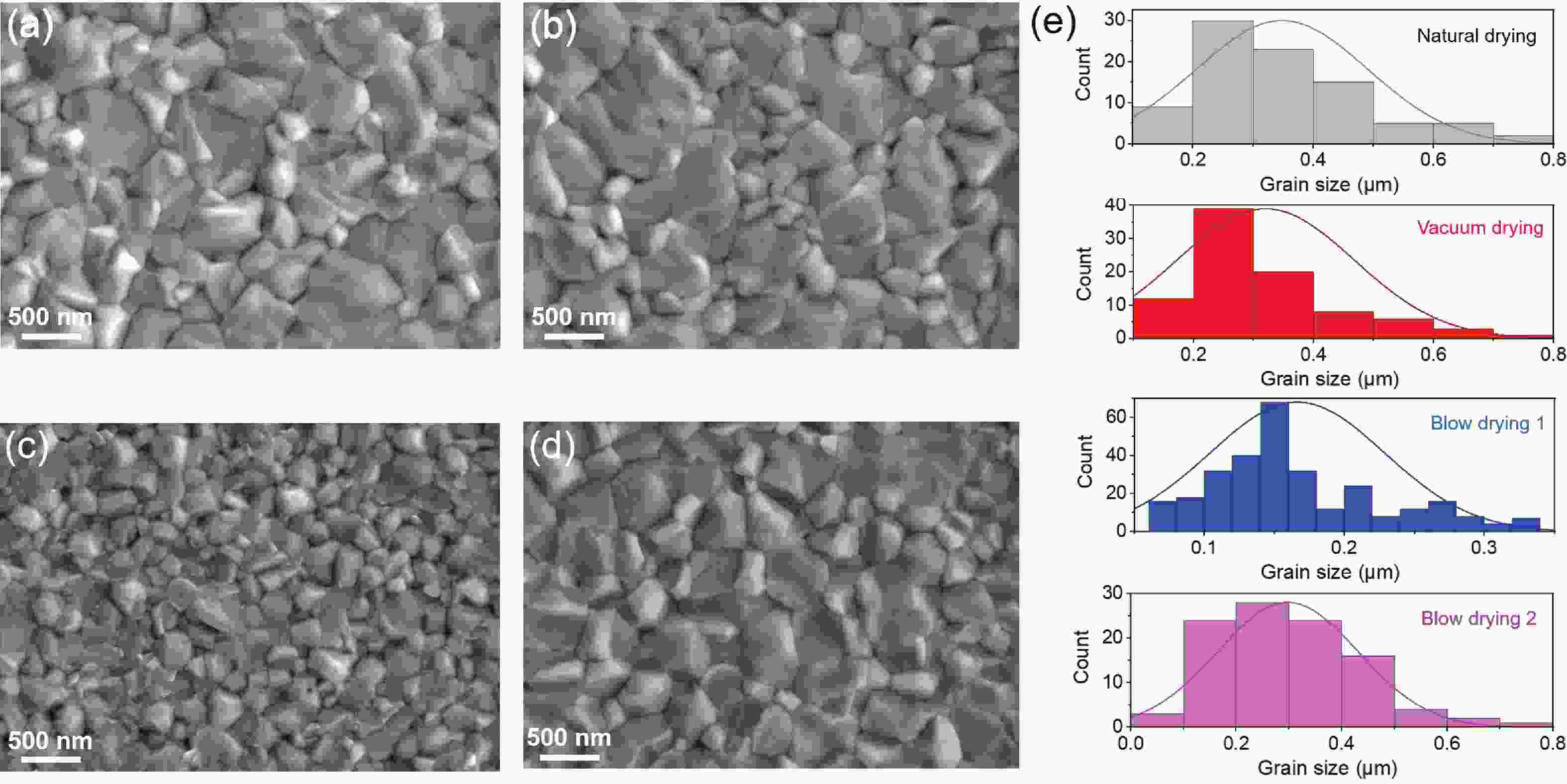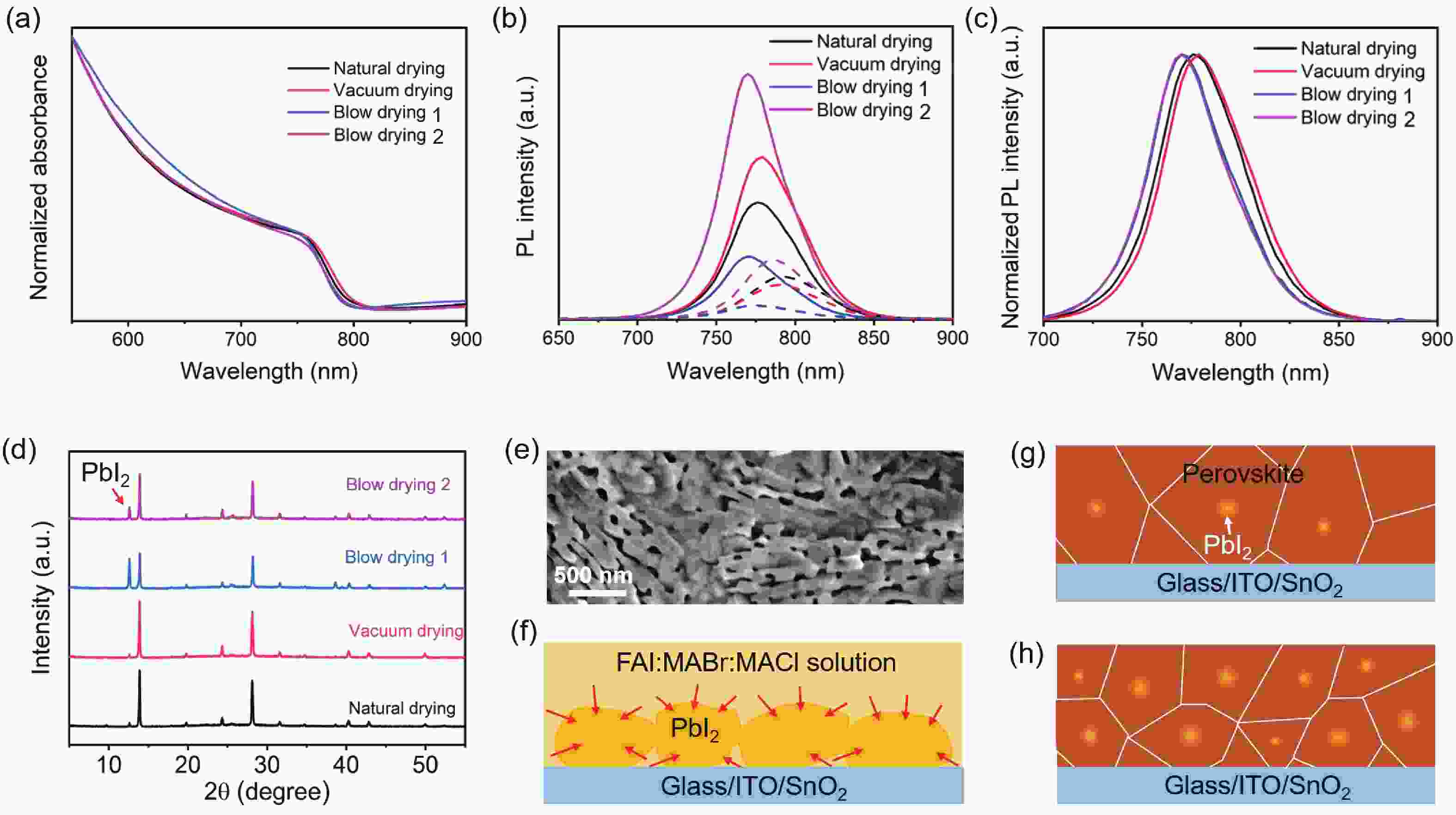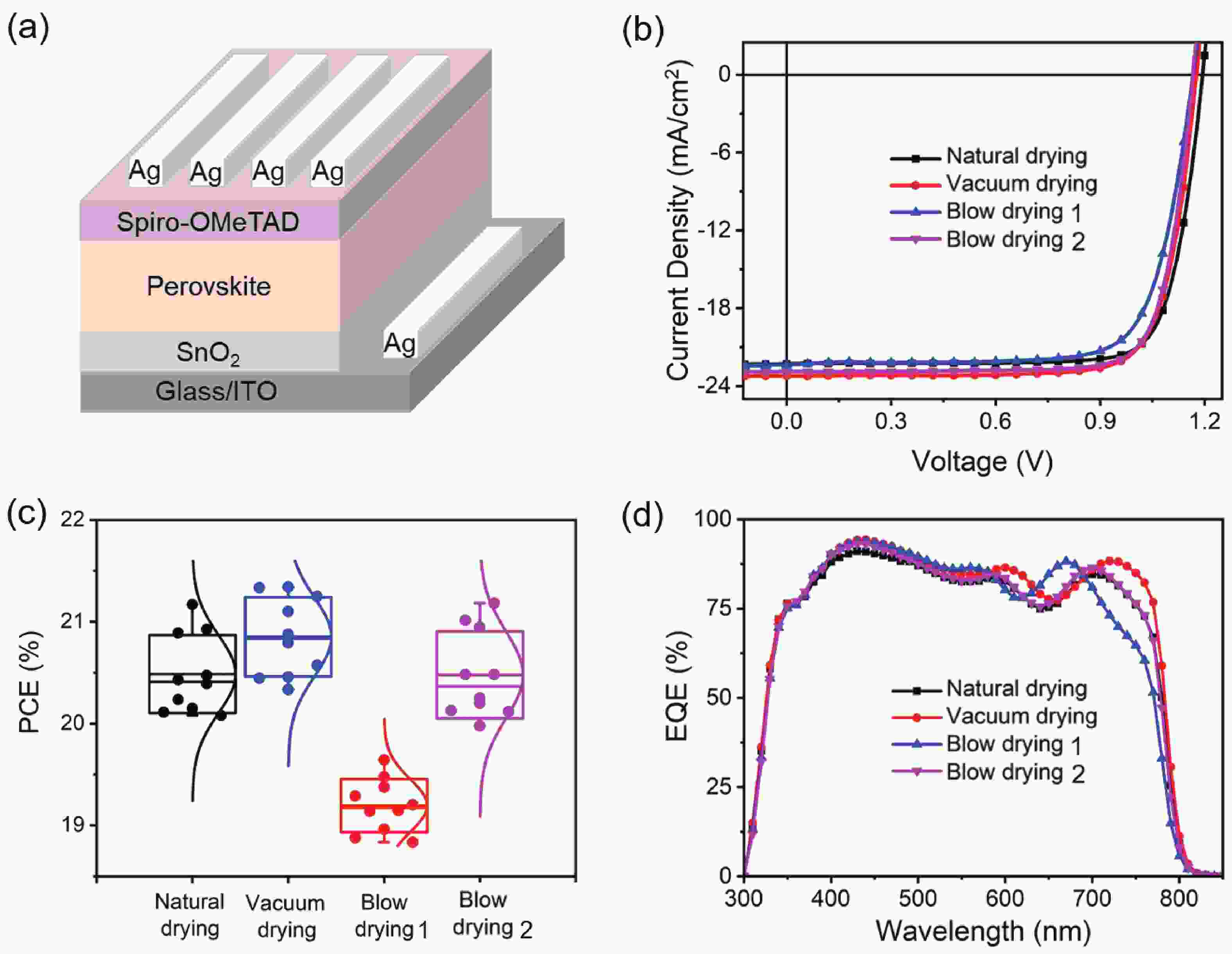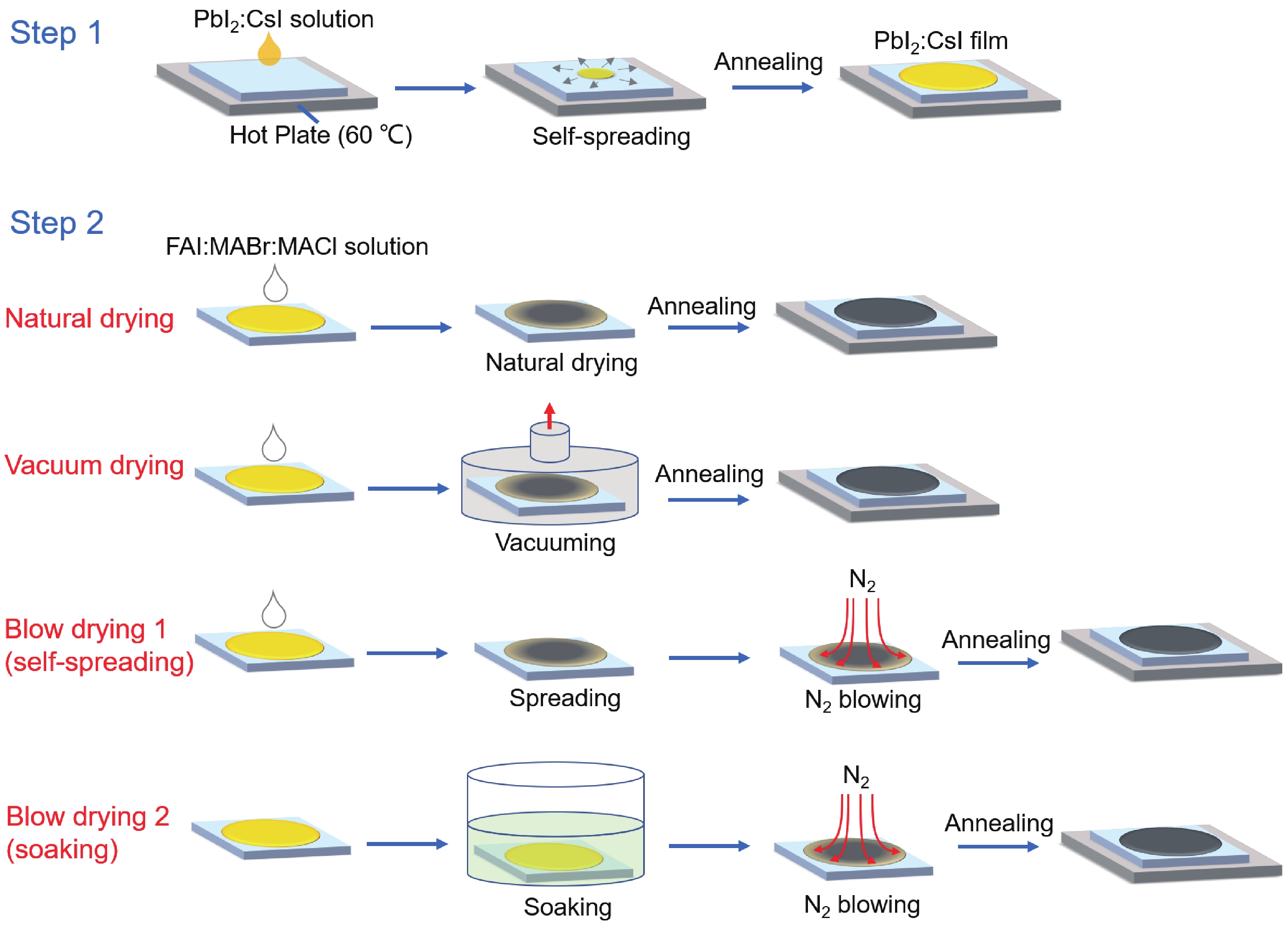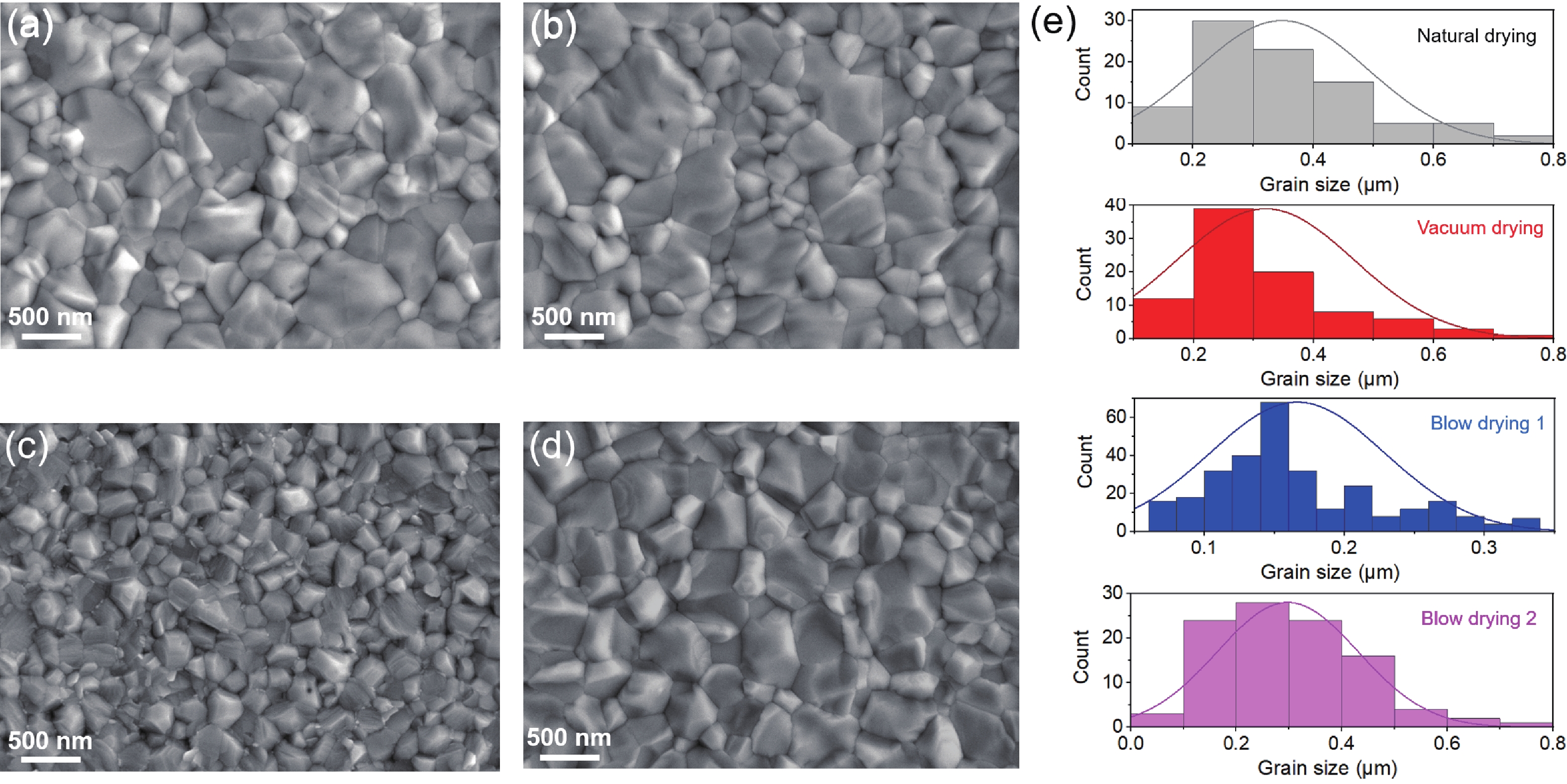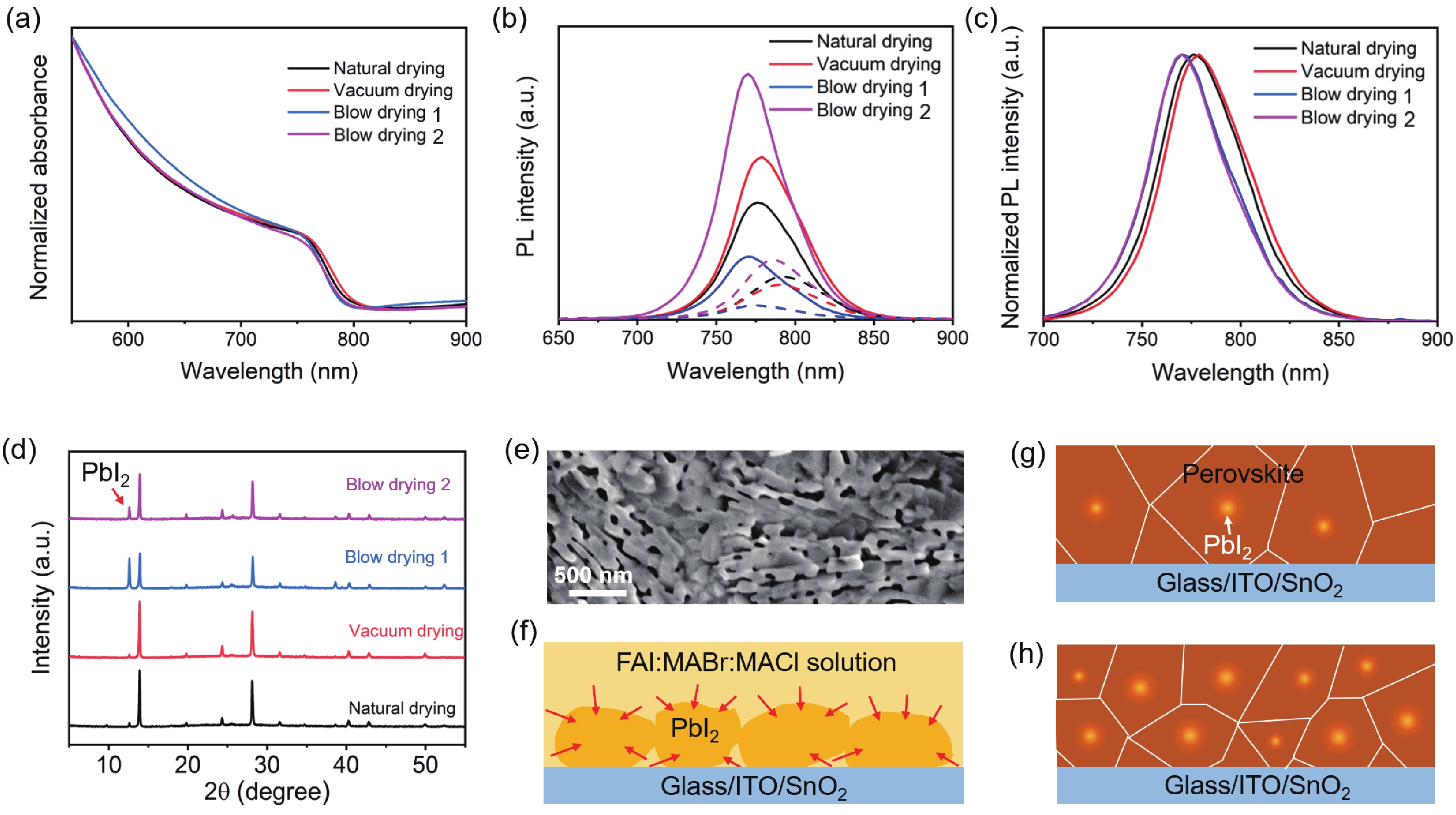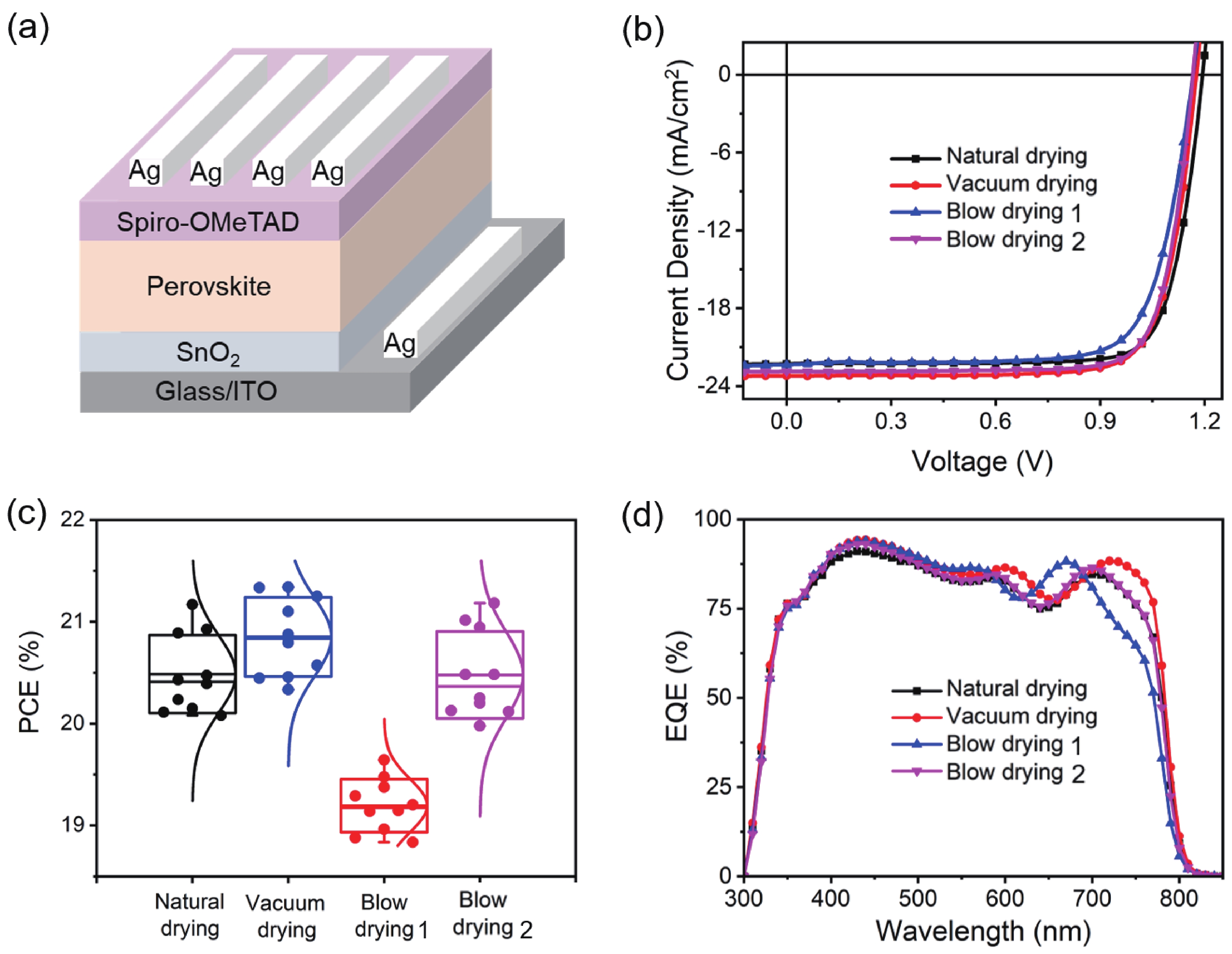| Citation: |
Ling Liu, Chuantian Zuo, Guang-Xing Liang, Hua Dong, Jingjing Chang, Liming Ding. Effect of drying methods on perovskite films and solar cells[J]. Journal of Semiconductors, 2024, 45(1): 010501. doi: 10.1088/1674-4926/45/1/010501
L Liu, C T Zuo, G X Liang, H Dong, J J Chang, L M Ding. Effect of drying methods on perovskite films and solar cells[J]. J. Semicond, 2024, 45(1): 010501. doi: 10.1088/1674-4926/45/1/010501
Export: BibTex EndNote
|
Effect of drying methods on perovskite films and solar cells
doi: 10.1088/1674-4926/45/1/010501
More Information-
References
[1] Zhao Y, Ma F, Qu Z H, et al. Inactive (PbI2)2RbCl stabilizes perovskite films for efficient solar cells. Science, 2022, 377, 531 doi: 10.1126/science.abp8873[2] Chen X, Guo B, Zhang Z Y, et al. Binary hole transport layer enables stable perovskite solar cells with PCE exceeding 24%. DeCarbon, 2023, 1, 100004 doi: 10.1016/j.decarb.2023.100004[3] Liu W G, Raza H, Hu X D, et al. Key bottlenecks and distinct contradictions in fast commercialization of perovskite solar cells. Mater Futures, 2023, 2, 012103 doi: 10.1088/2752-5724/acba35[4] Tang G Q, Yan F. Flexible perovskite solar cells: Materials and devices. J Semicond, 2021, 42, 101606 doi: 10.1088/1674-4926/42/10/101606[5] Zhang L X, Pan X Y, Liu L, et al. Star perovskite materials. J Semicond, 2022, 43, 030203 doi: 10.1088/1674-4926/43/3/030203[6] Yang J, Hu J F, Zhang W H, et al. The opportunities and challenges of ionic liquids in perovskite solar cells. J Energy Chem, 2023, 77, 157 doi: 10.1016/j.jechem.2022.10.048[7] Zhou W, Pan T, Ning Z J. Strategies for enhancing the stability of metal halide perovskite towards robust solar cells. Sci China Mater, 2022, 65, 3190 doi: 10.1007/s40843-022-2277-9[8] Shao J Y, Li D M, Shi J J, et al. Recent progress in perovskite solar cells: Material science. Sci China Chem, 2023, 66, 10 doi: 10.1007/s11426-022-1445-2[9] Ma Y Z, Zhao Q. A strategic review on processing routes towards scalable fabrication of perovskite solar cells. J Energy Chem, 2022, 64, 538 doi: 10.1016/j.jechem.2021.05.019[10] Huang F, Li M J, Siffalovic P, et al. From scalable solution fabrication of perovskite films towards commercialization of solar cells. Energy & Environ Sci, 2019, 12, 518 doi: 10.1039/C8EE03025A[11] Yao H H, Shi S H, Li Z Z, et al. Strategies from small-area to scalable fabrication for perovskite solar cells. J Energy Chem, 2021, 57, 567 doi: 10.1016/j.jechem.2020.08.033[12] Jiang Z Y, Wang B K, Zhang W J, et al. Solvent engineering towards scalable fabrication of high-quality perovskite films for efficient solar modules. J Energy Chem, 2023, 80, 689 doi: 10.1016/j.jechem.2023.02.017[13] Castro-Hermosa S, Wouk L, Bicalho I S, et al. Efficient fully blade-coated perovskite solar cells in air with nanometer-thick bathocuproine buffer layer. Nano Res, 2021, 14, 1034 doi: 10.1007/s12274-020-3147-4[14] Gu Z K, Wang Y, Wang S H, et al. Controllable printing of large-scale compact perovskite films for flexible photodetectors. Nano Res, 2022, 15, 1547 doi: 10.1007/s12274-021-3700-9[15] Li H, Liu M Z, Li M C, et al. Applications of vacuum vapor deposition for perovskite solar cells: A progress review. iEnergy, 2022, 1, 434 doi: 10.23919/IEN.2022.0053[16] Chang X M, Fan Y Y, Zhao K, et al. Perovskite solar cells toward eco-friendly printing. Research, 2021, 2021, 9671892 doi: 10.34133/2021/9671892[17] Zhu Y Q, Hu M, Xu M, et al. Bilayer metal halide perovskite for efficient and stable solar cells and modules. Mater Futures, 2022, 1, 042102 doi: 10.1088/2752-5724/ac9248[18] Gao C, Wang H, Wang P, et al. Defect passivation with potassium trifluoroborate for efficient spray-coated perovskite solar cells in air. J Semicond, 2022, 43, 092201 doi: 10.1088/1674-4926/43/9/092201[19] Chen B B, Wang P Y, Ren N Y, et al. Tin dioxide buffer layer-assisted efficiency and stability of wide-bandgap inverted perovskite solar cells. J Semicond, 2022, 43, 052201 doi: 10.1088/1674-4926/43/5/052201[20] Zuo C T, Scully A D, Vak D, et al. Self-assembled 2D perovskite layers for efficient printable solar cells. Adv Energy Mater, 2019, 9, 1803258 doi: 10.1002/aenm.201803258[21] Zuo C T, Scully A D, Gao M. Drop-casting method to screen Ruddlesden–Popper perovskite formulations for use in solar cells. ACS Appl Mater Interfaces, 2021, 13, 56217 doi: Drop-castingmethodtoscreenRuddlesden–Popperperovskiteformulationsforuseinsolarcells[22] Zuo C T, Ding L M. Drop-casting to make efficient perovskite solar cells under high humidity. Angew Chem Int Ed, 2021, 60, 11242 doi: 10.1002/anie.202101868[23] Zhang L X, Zuo C T, Ding L M. Efficient MAPbI3 solar cells made via drop-coating at room temperature. J Semicond, 2021, 42, 072201 doi: 10.1088/1674-4926/42/7/072201[24] Xiao H R, Zuo C T, Zhang L X, et al. Efficient inorganic perovskite solar cells made by drop-coating in ambient air. Nano Energy, 2023, 106, 108061 doi: 10.1016/j.nanoen.2022.108061[25] Xiao H R, Zuo C T, Yan K Y, et al. Highly efficient and air-stable inorganic perovskite solar cells enabled by polylactic acid modification. Adv Energy Mater, 2023, 13, 2300738 doi: 10.1002/aenm.202300738[26] Xiao H R, Zuo C T, Liu F Y, et al. Drop-coating produces efficient CsPbI2Br solar cells. J Semicond, 2021, 42, 050502 doi: 10.1088/1674-4926/42/5/050502[27] Liu L, Xiao H R, Jin K, et al. 4-Terminal inorganic perovskite/organic tandem solar cells offer 22% efficiency. Nano-Micro Letters, 2022, 15, 23 doi: 10.1007/s40820-022-00995-2[28] Zuo C T, Tan L G, Dong H, et al. Natural drying yields efficient perovskite solar cells. DeCarbon, 2023, 2, 100020 doi: 10.1016/j.decarb.2023.100020[29] Zuo C T, Zhang L X, Pan X Y, et al. Perovskite films with gradient bandgap for self-powered multiband photodetectors and spectrometers. Nano Res, 2023, 16, 10256 doi: 10.1007/s12274-023-5714-y[30] Liu L, Zuo C T, Ding L M. Self-spreading produces highly efficient perovskite solar cells. Nano Energy, 2021, 90, 106509 doi: 10.1016/j.nanoen.2021.106509[31] Zhang H, Park N G. Progress and issues in p-i-n type perovskite solar cells. DeCarbon, 2023, 100025 doi: 10.1016/j.decarb.2023.100025[32] Li C, Sun H X, Gan S, et al. Perovskite single crystals: Physical properties and optoelectronic applications. Mater Futures, 2023, 2, 042101 doi: 10.1088/2752-5724/ace8aa[33] Zhang L X, Li H, Zhang K, et al. Major strategies for improving the performance of perovskite solar cells. iEnergy, 2023, 2, 172 doi: 10.23919/IEN.2023.0026[34] Tao L, Qiu J, Sun B, et al. Stability of mixed-halide wide bandgap perovskite solar cells: Strategies and progress. J Energy Chem, 2021, 61, 395 doi: 10.1016/j.jechem.2021.03.038[35] Tian W J, Song P Q, Zhao Y P, et al. Monolithic bilayered In2O3 as an efficient interfacial material for high-performance perovskite solar cells. Interdiscip Mater, 2022, 1, 526 doi: 10.1002/idm2.12047 -
Proportional views





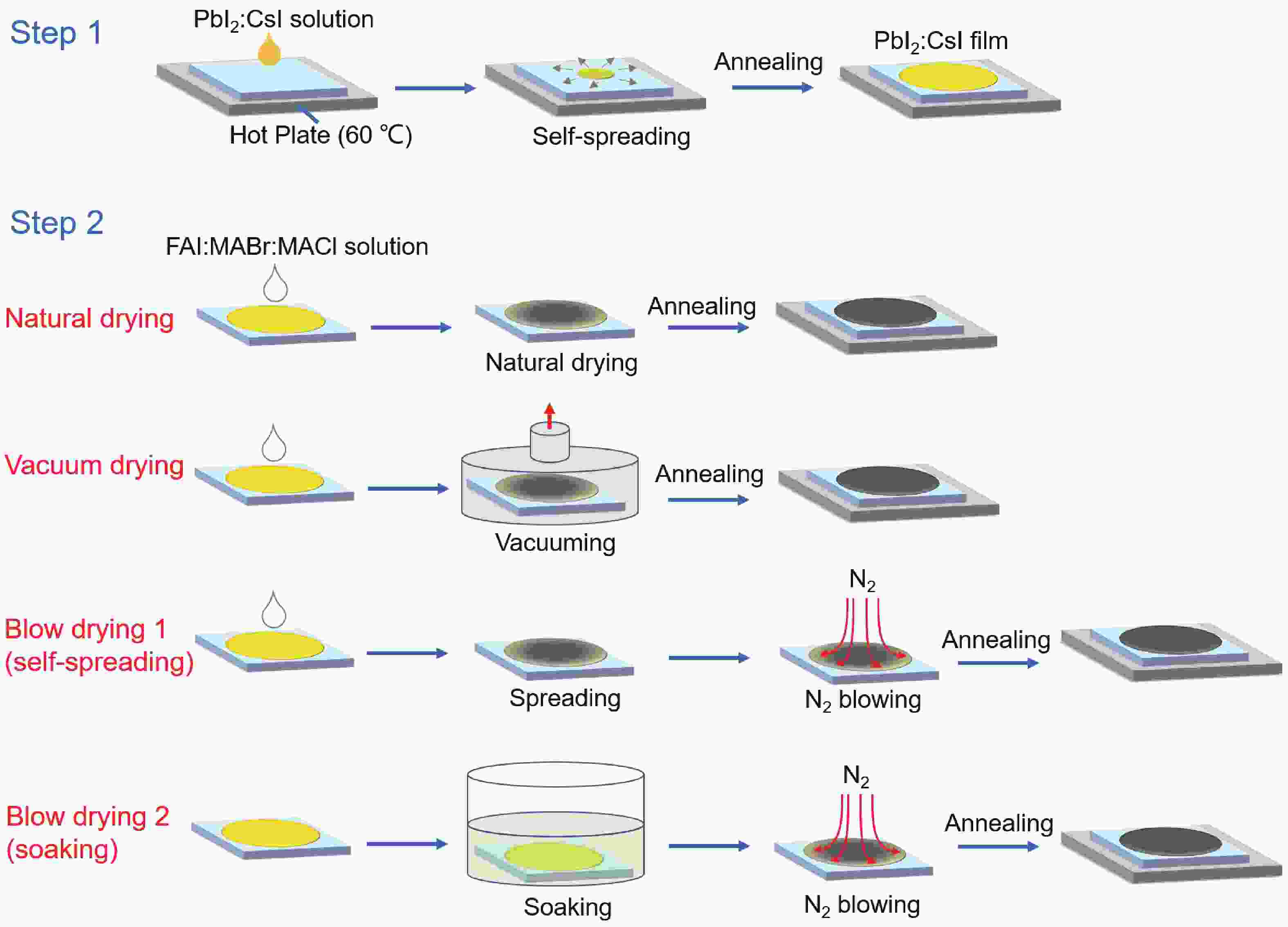
 DownLoad:
DownLoad:
